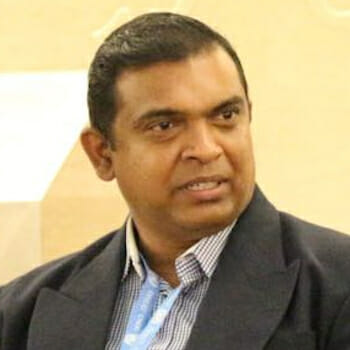
Culture
How India Uses Surnames to Perpetuate Caste Discrimination
A name has infinite power, and it is associated with an individual’s history, family, economic, and social status in India. A name is the first thing that gets asked in any interaction, and most significantly, it is the identity that each of us carries. The reason that it carries so much power is due to the labels and stereotypes that are attached to each name based on caste, religion, and class.
Ever since ancient times, the caste system was firmly in place, with Dalits being called several names such as Chandalas (dispenser of corpses), Panchama (the 5th Varna), Rakshasa (demon), Atishudra, untouchables and outcastes. As India transitioned into the British colonial period, many changes occurred, with Dalits and Adivasi being pushed into categories such as Scheduled Caste and Scheduled Tribes, respectively. However, one’s surname became an identification of caste background.
The castes with surnames like Mukherjee and Banerjee in West Bengal, Goswami in Assam, Sharma and Tripati in Uttar Pradesh and Bihar, Pandit in Kashmir, Bhatts and Prabhus in Goa and Maharashtra, and Iyenger and Iyer in Kerala and Tamil Nadu maintained social and cultural hierarchy in Indian society.
Historically, Dalits were subjected to exclusion and discrimination in naming practices and were barred from adopting names associated with the meaning of the Hindu religion. Since the relationship between lower castes and dominant castes is based on purity and impurity, Dalits were forced to keep names and surnames which identify their occupation and status in the Indian social order.

Generally, Dalits are referred to as Mala and Madiga Andhra in southern India; Pallar, Paraya, and Chaklia in Tamil Nadu; Holeya and Madiga in Karnataka; Pulayan and Cherumar in Kerala; Mahar and Mang in Maharashtra; Mahar and Chamar in northern India. Most of the names and surnames of Dalits and lower caste people are associated with animals, vegetables, or caste-based occupations and identities across the country. For instance, in Kerala, surnames like Pulayan or Cherumar are historically assigned to Dalits, causing disparaging associations with animals, pushing perceptions of worthlessness and subservience.
Similarly, in northern India, names like Kachara (garbage), Dhobi (washerman), Kumhar (potter), or Mushahar (rat-eater) or Bhalla (black gram), and in Telangana and Andhra Pradesh, Thippu (dirt in Telugu), Bhangi (sweeper), Kumhar (potter), Mala (gardener) or Madiga (leatherworker) make lower caste individuals with occupations considered to be unskilled or lowly, further ingraining caste-based prejudices. These practices not only result in systemic discrimination but also destroy the dignity and humanity of individuals, placing obstacles towards their socio-economic movement. This systemic oppression through names reflected the pervasive caste hierarchy, denying Dalits their dignity and cultural identity.
Dalits faced extensive discrimination for daring to adopt distinguished surnames, wear luxurious attire, dine at public establishments, indulge in cinema, or visit temples and other common spaces. Any attempt by Dalits to challenge society’s rigid rules triggered violent responses, marking them as “arrogant” and rebels against the established caste order. Such atrocities were not isolated incidents but deep-rooted prejudice displayed methodically. Caste-based surnames have become subtle barriers for Dalits, obstructing their access to education and employment opportunities. Systemic discrimination limits Dalits’ prospects, causing waves of poverty and marginalization. Educational institutions and workplaces often favour individuals with ‘privileged’ surnames, excluding Dalits from advancement. Despite possessing skills and talents, Dalits face systemic hurdles, denying them equal footing in the pursuit of a livelihood.
In the context of caste discrimination in education and employment sectors, the removal of caste-based surnames emerges as a potent solution with transformative potential. This approach addresses the systemic biases entrenched within societal structures, offering a pathway toward genuine equality and inclusion. Caste-based surnames serve as reminders of social hierarchy, causing discrimination and hindering the advancement of marginalized communities, particularly Dalits. By eliminating these identifiers, individuals are liberated from the constraints of caste-based stereotypes, resulting in a merit-based environment. Education, often considered a cornerstone of social advancement, becomes more accessible to all, irrespective of caste background.
Likewise, in the employment sector, the removal of caste-based surnames promotes fair and equal hiring practices. It destroys barriers that impede Dalits from securing employment opportunities that match their qualifications and skills. Furthermore, the removal of caste-based surnames signals a shift towards eradicating caste-based discrimination. However, while removing caste-based surnames is a crucial step, it must be followed by further measures addressing systemic discrimination and promoting affirmative action for marginalized communities. Initiatives aimed at socio-economic improvement, educational scholarships, and sensitization workshops are essential in addressing historical injustices and ensuring genuine social equality.
The removal of caste-based surnames is a necessary step for combating caste discrimination and exclusion in India. It signifies a commitment to building an egalitarian society where individuals are valued for their abilities and potential rather than their origins, ultimately creating a more just and inclusive society. There was an attempt to end this surname culture under the Dravidian movement, but caste names remained and continued as an assertion of the caste mentality and identity.


